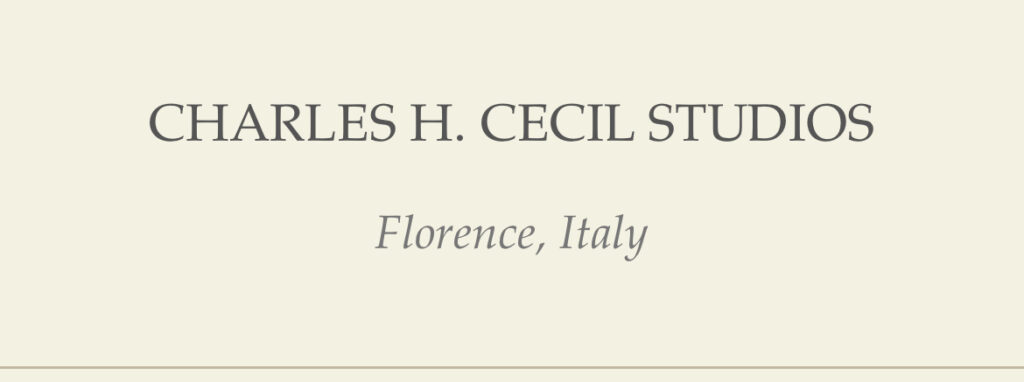The aim of the Charles H. Cecil Studios is to preserve and advance the figurative tradition of drawing and painting from life, and to perpetuate the atelier training so essential to its future. The Charles H. Cecil Studios also seeks to impart the aesthetic and humanistic values that underlie the tradition.
Fundamental to atelier training is the sight-size method, which has been handed down from master to pupil throughout the centuries. Sight-size is an invaluable way of working to the scale of life, under natural light, whereby the subject and image are viewed side-by-side at a distance. The painter works standing and approaches the canvas repeatedly to convey the impression of the whole, as opposed to a piecemeal rendering of the parts. Knowledge of sight-size is equally important for drawing and painting under the scale of life. It should be noted that the origins of the practice can be traced to the Renaissance treatises of Alberti and Leonardo da Vinci.
A sight-size portrait to the scale of life is neither static nor photographic. It manifests a freedom of brushwork that comes into focus when perceived from afar. Too often misconstrued as a mere measuring technique for accuracy, sight-size is, above all, a unique means of attaining truth to nature through individual expression. Reynolds and Gainsborough used the same procedure, but their handling of oil paint and characterization can never be confused – so, too, Velázquez and Hals, or Whistler and Sargent. Sight-size is not a stylistic convention, fashion, or manner delimited by a particular epoch; it is, instead, a visual continuum that reaches to the future and the past. For this reason, masters of different eras like Velázquez, Raeburn, and Sargent can bear such a close kinship.

Sorry, we couldn't find any posts. Please try a different search.




